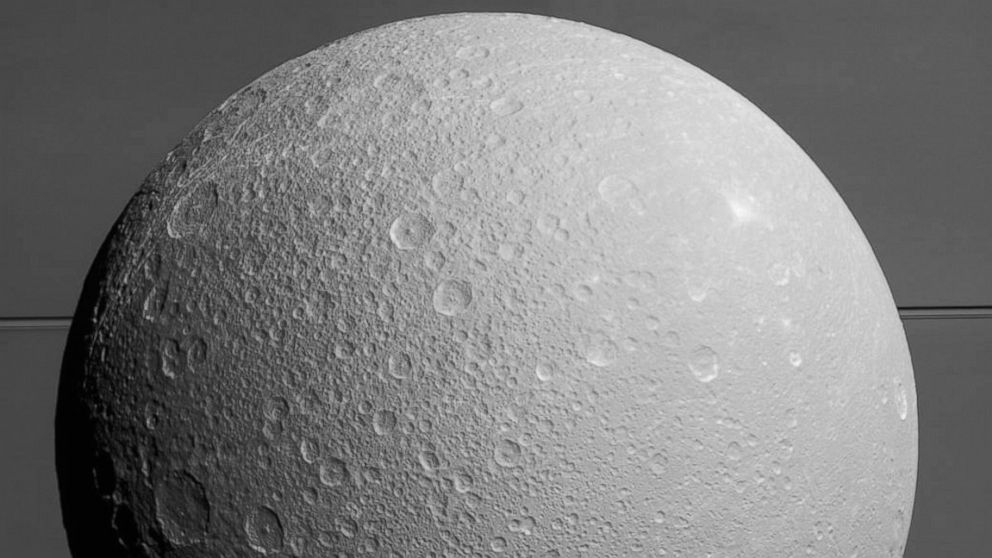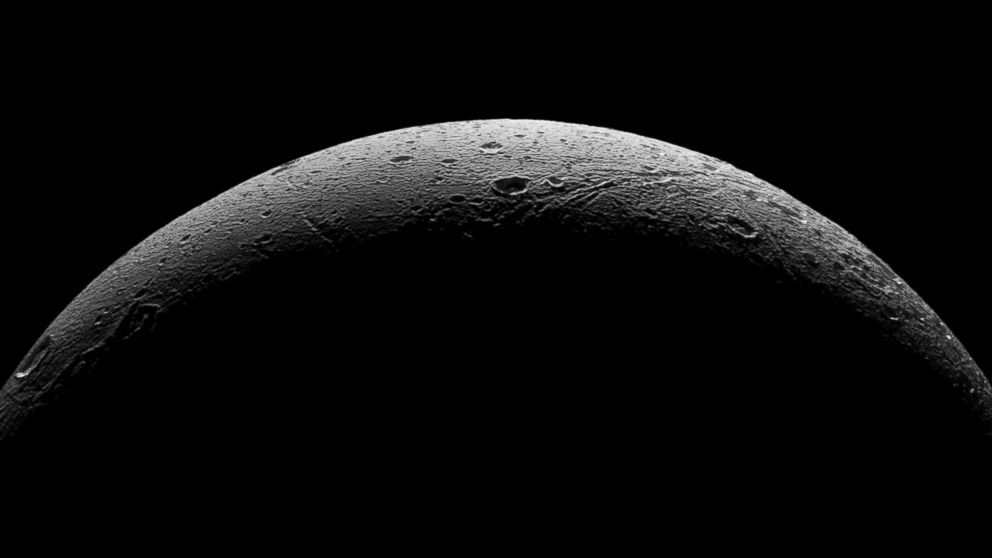Cassini Probe Takes Breathtaking Final Look at Saturn's Moon Dione
Gorgeous photo was snapped from 295 miles away.

— -- NASA's Cassini space probe swooped in for its final close encounter with Dione -- one of Saturn's 62 known moons -- and took a stunning final look at the icy world.
Taken from 295 miles away, the high-resolution shots show the pockmarked surface of the tiny moon in clear detail.
"I am moved, as I know everyone else is, looking at these exquisite images of Dione's surface and crescent, and knowing that they are the last we will see of this far-off world for a very long time to come," Carolyn Porco, who leads Cassini's imaging team, said in a statement. "Right down to the last, Cassini has faithfully delivered another extraordinary set of riches. How lucky we have been."
Saturn has 62 known moons.
Launched in 1997, the Cassini mission arrived in the Saturn system in 2004 where it has been working ever since to study the gas giant and its dozens of moons.
As Cassini prepares for its grand finale in 2017, it has only a few more flybys of Saturn's large moons on its agenda. It will make three approaches to the moon Enceladus later this year, passing as close as 30 miles from the geologically active moon's surface on Oct. 28.

The plan for 2016 includes some distant flybys of Saturn's largest moons, coming in at ranges under 30,000 miles. The space probe will also whiz by some of Saturn's smaller and irregularly shaped moons, giving scientists on Earth what could be their best ever look at the tiny moons.
The probe's mission is scheduled to end in September 2017, when it will make a fatal plunge into Saturn's atmosphere. It's set to spend its finally months diving through the area between Saturn and its famous rings.



